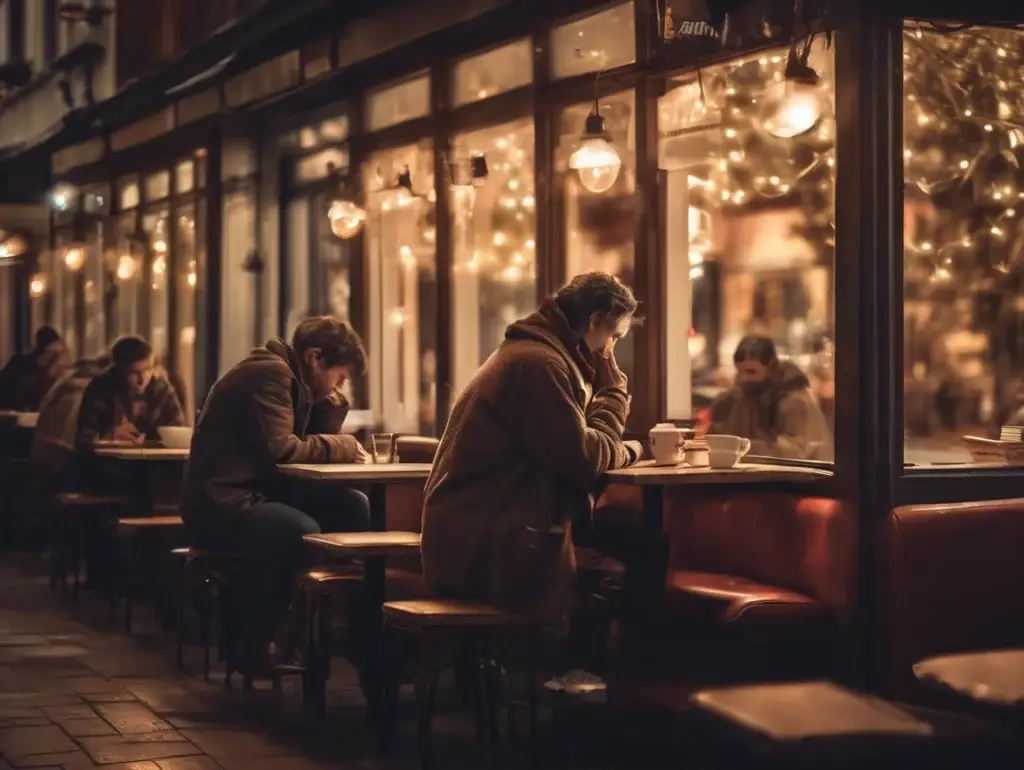Dating today isn’t what it used to be—and that’s not necessarily a bad thing. The way we meet, communicate, and build relationships has shifted dramatically over the past few decades, bringing both new opportunities and fresh challenges. For those navigating the dating world in the 2020s, understanding the landscape can be just as important as knowing your own values and boundaries.
In this post, we’ll explore common dating challenges, the evolution of romantic expectations, how to spot (and not ignore) red flags, and the growing debate between online and offline dating. We’ll also dig into eye-opening statistics about dating apps and how they’re skewing the playing field, disproportionately affecting who gets matched—and who doesn’t.
Dating Then vs. Now: A Brief Evolution
Before apps and swipe fatigue, most people met their partners through mutual friends, school, work, or in public spaces. But as technology evolved, so did dating.
According to a 2019 Stanford study, online dating is now the most common way couples meet, overtaking all other traditional methods. In 1995, only 2% of couples met online. By 2017, that number had skyrocketed to nearly 40%. That’s a 1,900% increase in just over two decades.
But as the digital takeover grew, so did complications.
Where courtship used to involve time, conversation, and vulnerability, many of today’s dating interactions are filtered—both literally and emotionally—through screens. This has led to a paradox of choice, where more options don’t necessarily mean better outcomes.
The Rise of Expectations—and Miscommunication
Dating today comes with an often unspoken (and sometimes unrealistic) list of expectations. We expect emotional availability, financial stability, strong communication skills, emotional intelligence, ambition, and even humor—often right from the first date.
But that’s the thing: most of us are bringing expectations without first understanding or communicating our own needs and values.
Key challenges in modern dating expectations:
- Instant gratification: Texting and swiping have trained many to expect immediate responses and emotional intimacy without laying a foundation.
- Fear of vulnerability: With so many “backup options” available, people often avoid getting too close or opening up fully.
- Ghosting and breadcrumbing: The rise of disappearing acts and keeping others “on the hook” causes confusion and emotional distress.
“Patience and communication are critical. If you’re not talking through your needs and listening to theirs, you’re setting yourself up for misunderstandings.”
Red Flags Are Real—Don’t Just Wave Them Off
If there’s one message worth shouting from the rooftops, it’s this:
Red flags? If you see them, don’t overlook them. They’re real.
In early dating, it’s easy to rationalize behavior that feels off. But dismissing red flags in hopes that things will “settle down” often leads to deeper relational harm.
Common red flags that should never be ignored:
- Lack of communication or avoidance of conflict
- Love bombing, then withdrawing
- Controlling behavior, jealousy, or isolation
- Avoiding emotional vulnerability
- Inconsistent behavior or keeping secrets
It’s important to remember that your intuition is valid. If something doesn’t feel right, it’s worth exploring—not excusing.
Online Dating: Toxic or Transformative?
There’s a growing sentiment that online dating can be emotionally exhausting—and at times, outright toxic.
“Go offline. Online dating is immensely toxic.”
While online platforms offer convenience and access to people outside your immediate circle, they also come with major downsides:
- Surface-level judgments: Profiles reduce people to a highlight reel.
- Swipe fatigue: Too many options create emotional burnout.
- Algorithmic bias: Dating apps often push certain profiles forward based on physical appearance and engagement rates.
The Data Behind the Disillusionment
Dating apps are not as democratic as they appear. Studies show that the top 10-20% of users (usually the most conventionally attractive and wealthy) receive the vast majority of matches and messages.
According to a 2016 study published in Science Advances, women on dating apps tend to pursue men who are 25% more attractive than they are, while men will swipe right on most women but receive fewer responses. This has created an uneven playing field where only a small percentage of users consistently see success—while others feel ignored, disposable, or unworthy.
This dynamic is amplified by app algorithms, which prioritize profiles that get high engagement. That means those with professional photos, stylish appearances, and higher education or wealth indicators tend to rise to the top.
Key statistics:
- According to a Pew Research study (2020), 57% of online daters said they felt their matches did not reflect what they were looking for.
- A 2018 study found that 80% of women were pursuing the top 20% of men on dating platforms like Tinder, leading to an extreme imbalance in who gets attention.
- Nearly 50% of users report feeling burned out by online dating, citing ghosting and superficiality as top complaints.
Offline Dating: A Refreshing Alternative
In response to the digital chaos, more people are choosing to “date offline”—meaning they prefer organic, in-person connections.
Offline dating isn’t dead. In fact, it may be making a comeback as people seek more authentic interactions. Community events, volunteering, mutual friends, local classes, and even simply chatting with strangers at coffee shops are becoming attractive again.
Offline Dating Perks:
- More context: You see a person’s energy, mannerisms, and how they treat others.
- Less pressure: No bio to overthink, just natural conversation.
- More alignment: People tend to meet others who share common spaces, values, and interests.
While it takes more time and courage to initiate in person, the quality of connection is often richer and more enduring.
Therapist’s Perspective: What Healthy Dating Looks Like
As a marriage and family therapist, my wife sees firsthand the impact of dating challenges on mental health, self-esteem, and long-term relationship outcomes.
Here are some tips she often shares with clients:
1. Be Honest with Yourself First
Before entering the dating pool, know what you’re looking for and what you’re not willing to compromise on. Your boundaries are sacred.
2. Don’t Ignore the Data—or Your Gut
Red flags are red for a reason. If someone disrespects your boundaries early on, they’re unlikely to change without serious work.
3. Prioritize Communication Over Performance
Dating isn’t about showing off your best self—it’s about showing up honestly and creating space for mutual vulnerability.
4. Take Breaks When You Need To
Dating burnout is real. If the apps are draining you or making you feel less than, it’s okay to log off and reset.
5. Stay Rooted in Reality
Idealizing a partner—or what dating “should” look like—can keep you from appreciating real, messy, beautiful human connection.
Final Thoughts: Reclaiming Dating for Connection
Dating in the modern world isn’t hopeless, but it does require awareness and intention. With so many external influences—apps, algorithms, curated Instagram stories—it’s easy to lose touch with what really matters: emotional safety, respect, mutual goals, and authentic chemistry.
Whether you’re swiping, sipping coffee, or meeting people through mutual friends, one truth remains:
Healthy love begins with healthy boundaries.
Want to Meet People Offline? Here Are 5 Sites to Get You Started
If you’re feeling burned out from dating apps, you’re not alone. Luckily, more people are turning to real-world experiences to meet others in natural, low-pressure settings. Whether you’re looking for friendship, romance, or just a new social circle, these platforms make offline connections easier:
1. Meetup
Connect with local groups based on shared interests—everything from hiking to tech, game nights to meditation circles. Perfect for finding your people in real life.
2. Eventbrite
Search your city for local events like art walks, fitness classes, music festivals, and business mixers. Filter by category and price to discover something new every week.
3. The Dinner Party
A beautiful space for people navigating loss and grief, offering community dinners centered around real connection and shared experiences. Deep conversations guaranteed.
4. City Social Club
A curated social club with in-person events for young professionals—think wine tastings, book clubs, hikes, and wellness experiences. Ideal for meeting emotionally intelligent people who want genuine connection.
5. Facebook Events & Groups
Still underrated—local Facebook groups and events are often where communities post gatherings first. Whether it’s a trivia night at a brewery or a volunteer event, it’s a goldmine of opportunities.
Bonus Offline-First Ideas:
- Join a local adult rec sports league (kickball, volleyball, softball)
- Volunteer for a cause you care about—connection comes naturally when you’re doing something meaningful
- Take a class (cooking, dance, art, improv—whatever lights you up)
- Attend community board or city events to meet people who live near you
- Hang out at third spaces like cozy cafés, coworking spaces, and libraries
Remember: Real connection starts when you show up—not just online, but in life.

